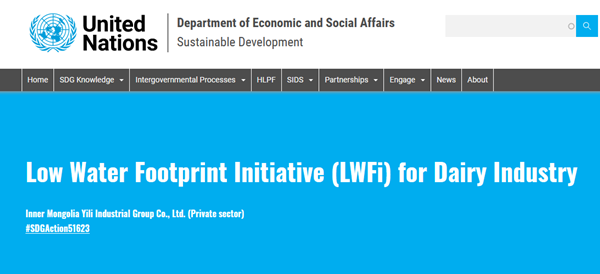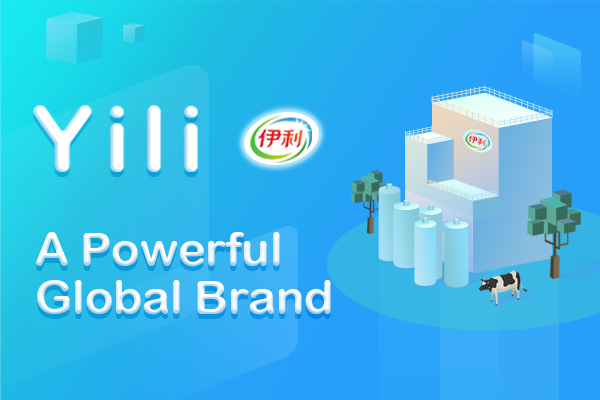Yili gets green light to join UN Water Action Agenda

Yili's low water footprint initiative called LWFi is published on UN's website. [Photo provided to en.hhhtnews.com]
An ambitious and far-reaching low water footprint initiative, called the Low Water Footprint Initiative for the Dairy Industry – developed by Chinese dairy giant Inner Mongolia Yili Industrial Group, or Yili – has won a great accolade.
The initiative by the group – based in Hohhot, capital city of North China's Inner Mongolia autonomous region – was officially approved by the United Nations Economic and Social Council on March 24 and the announcement was publicly released on its official website with project number #SDGAction51623.
As a result, Yili became the first Chinese company to commit to and be approved to join the UN Water Action Agenda.
The low water footprint initiative launched by Yili – which is known for short as LWFi – is said to be in line with the UN Sustainable Development Goal 6 (SDGs 6).
This envisages a substantial improvement of water use and efficiency globally across all sectors by 2030 – ensuring the sustainable extraction and supply of fresh water and reducing the water usage footprint through close cooperation and synergy across a raft of sectors.
The UN Water Action Agenda is a major achievement of the UN Water Conference, which was held at the UN headquarters in New York on March 22-24.
It was called the highest-level and most influential water-related conference held by the United Nations in the past 50 years. Some 6,000 people, from more than 200 countries and international organizations around the world, attended the conference.
The event is said to have comprehensively reviewed the mid-term implementation of the goals of the UN International Decade for Action on Water for Sustainable Development and adopted the UN Water Action Agenda.
Yili has developed a digital water resource management platform to conduct coordinated planning and management of the group's water intake and use – and link the industry supply chain to formulate water resource management plans.
This is expected to help it achieve its mid and long-term goals for sustainable water resource management.








